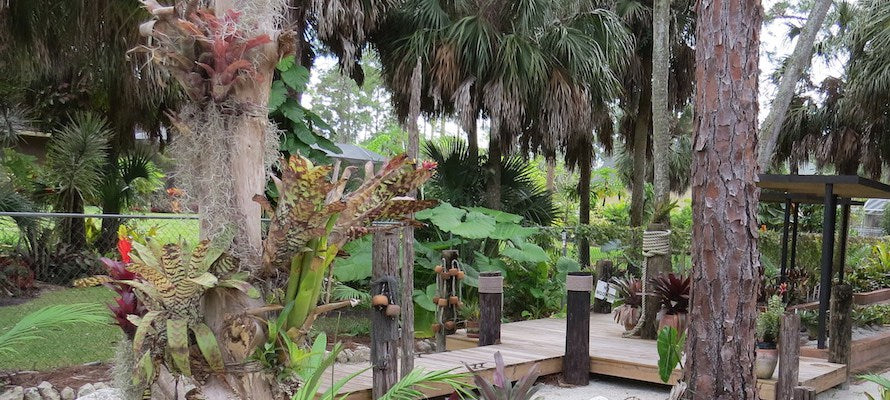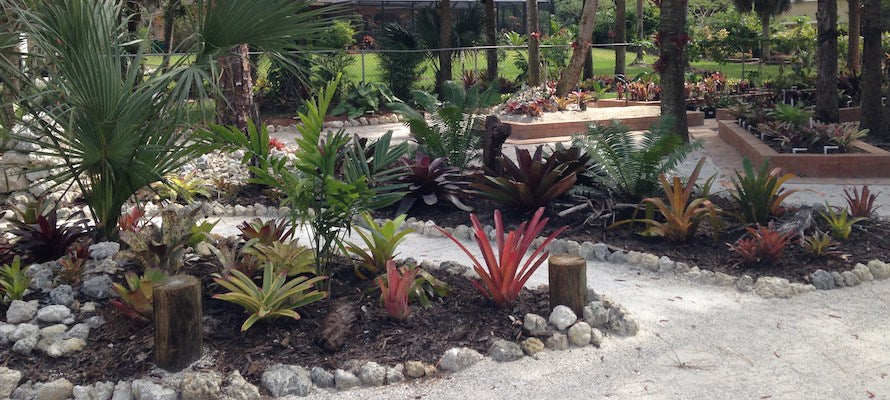Your Cart is Empty
Get Free Shipping on all orders $120 or more.

The genus was named after the director of the St. Petersburg (Russia) Imperial Botanic Garden Edward Von Regel in 1860. During his span at the Garden, he had over 3,000 species named after him as Russian imperialists were able to travel the world and send him thousands of plant species from all over the globe. During his reign, the plants were classified with generic names, and Lyman B. Smith, a Harvard educated American botanist specializing tropical plants later renamed the species to Neoregelia in 1934.
Neoregelias are compact and typically form a “cup” in the middle which gathers water and debris for nutrition Their leaves are often spotted, banded, or marbled, giving them a gorgeous accent of color and a lot of character. The central leaves will often bear a different color when in bloom.
Native Countries: Brazil, Peru, Columbia
Light: Indirect light or moderate shade. For more color, place neoregelia in more filtered sunlight. This bromeliad typically does not like direct light and will cause a burn. For indoors, use a place with strong sunlight. Outdoors find a shadier place with less direct sun. The afternoon sun is the hottest and most direct, find a place with morning or late afternoon sun.
Water: Water in the center cup, make sure the cup never dries. Prefers rainwater. If the water becomes stagnant, empty out and refill on a weekly basis. Avoid tap water as it causes mineral buildup.
Temperature: Somewhat more cold hardy, but prefer 55ºF or higher. They can survive to 40ºF. High temperatures will not harm the plant but will effect the color.
Soil: Often cultivated on the ground as a bedding plant, use a very well drained soil. To use as an air plant, climb a tree and fasten using New Zealand or “orchid” moss. Use very little fertilizer for better color.
Humidity: Prefers humidity, if in a drier climate, try misting the bromeliad. Neoregelia’s have the highest tolerance of the bromeliads for humidity.
Propagation:Neoregelia, like all bromeliads, spread by producing pups at its base. Once it’s flowered, the mother will start to die and the pups will begin to take over.
Repotting: Mature bromeliads should not be repotted. Smaller bromeliads can be potted into small containers until they are established, then moved into 4″ or 6″ pots until they flower. Neoregelia are somewhat lower, broader plants than some of the other bromeliads (like guzmania and aechmea) so are less likely to topple over in their new pots.
We have over 140 types available at Bromeliad Paradise.
Neoregelia are not difficult bromeliads to grow, but they are somewhat more dependent on strong light to develop deep, vivid colors in their leaves.
The post Bromeliad Care Spotlight: Neoregelia appeared first on Bromeliad Paradise.

When a bromeliad is ordered on-line, it will either be taken as an offset from a mother plant, or it will be taken from a pot. Either way, it is possible that it has already started to grow roots.

Bromeliads are a type of plant called epiphytes, which means that they draw moisture from the air and don’t need to be in soil to survive. While their roots can draw water and nutrients, they typically serve as a plant’s ‘anchor’, attaching and holding it place.

Although mosquitoes are not a pest that can harm your bromeliads, they can become very annoying to everyone around them. Mosquitoes are currently a topic of conversation as common sense and the facts often give way to rumor and sensationalism.